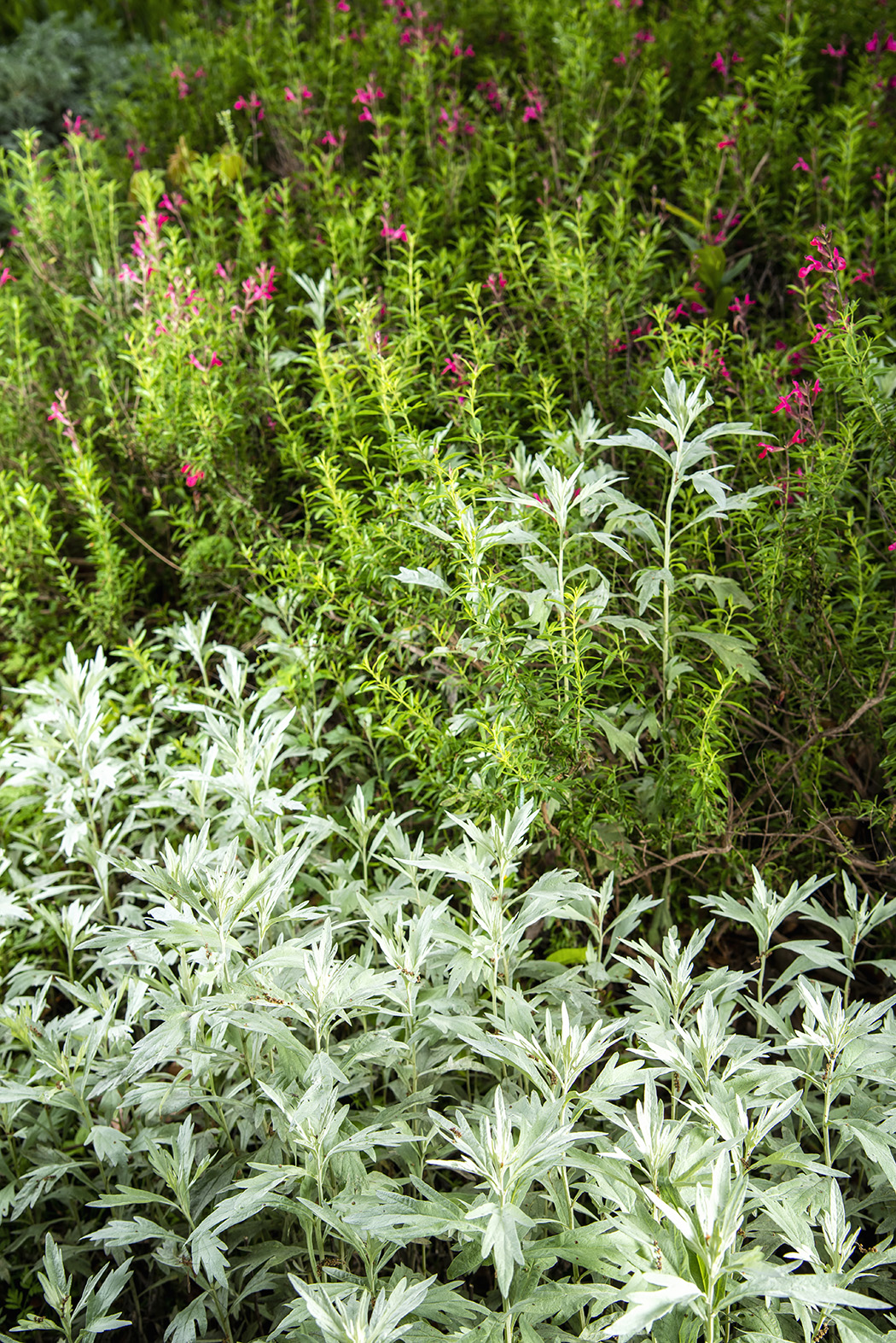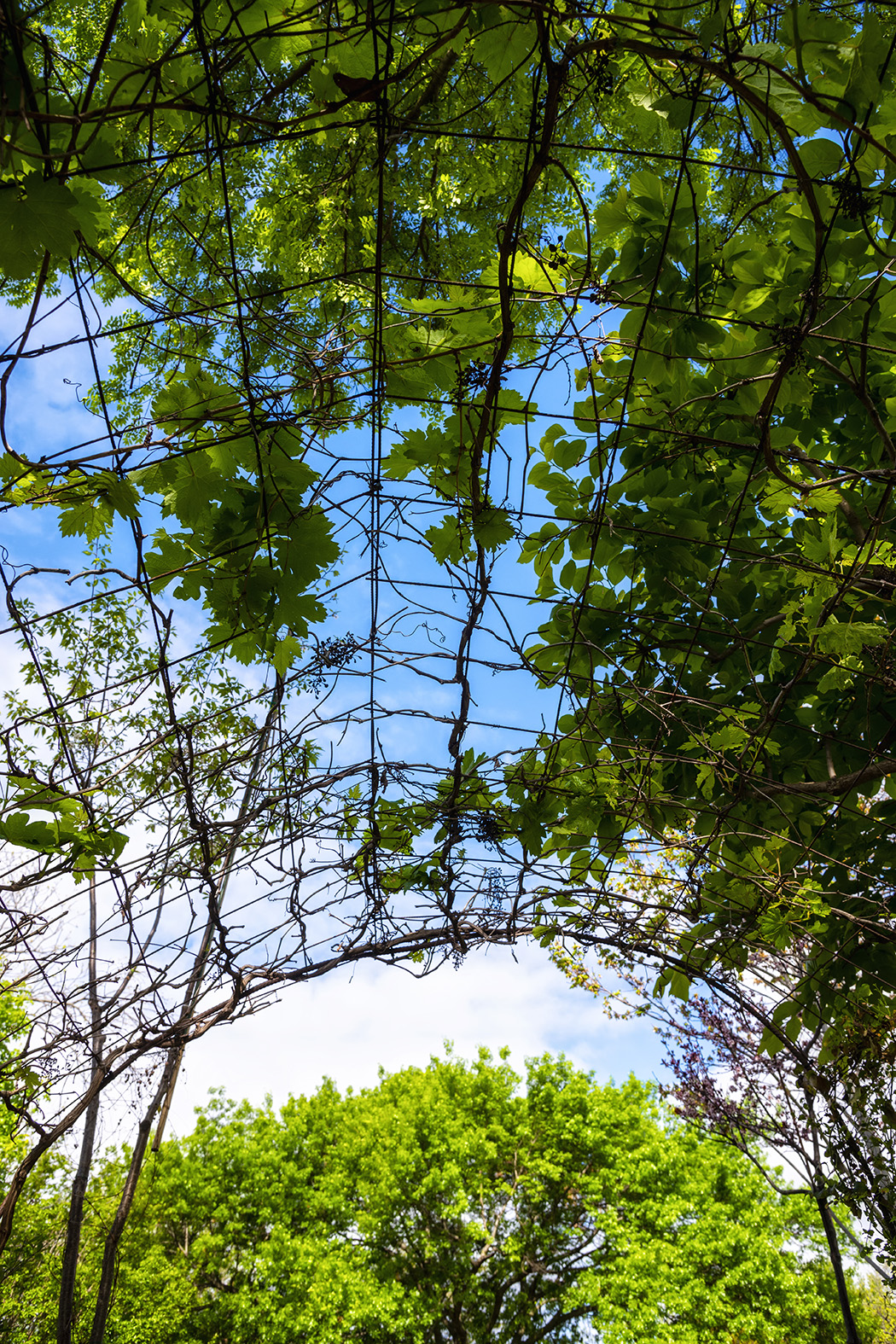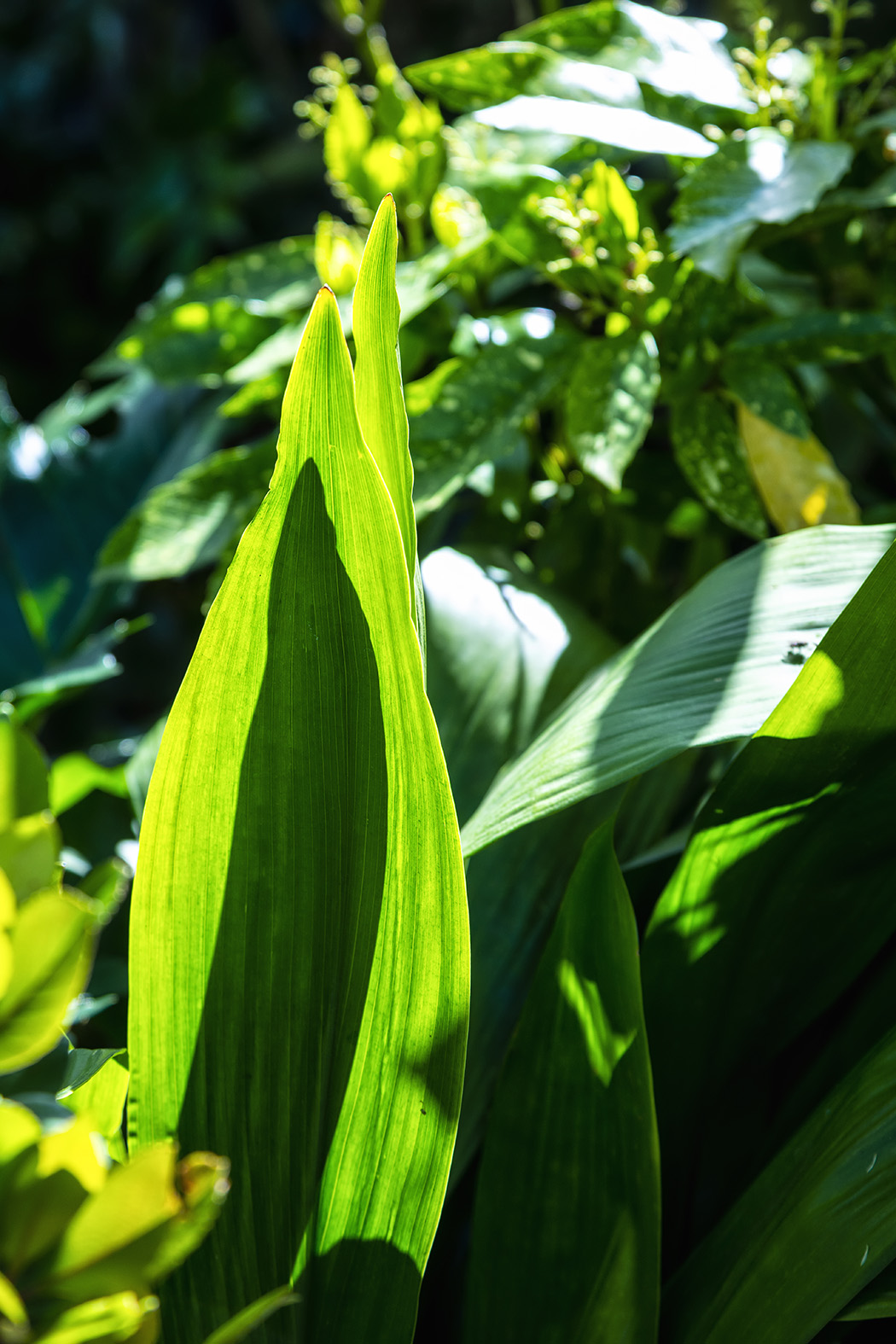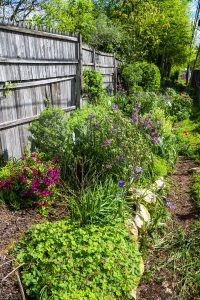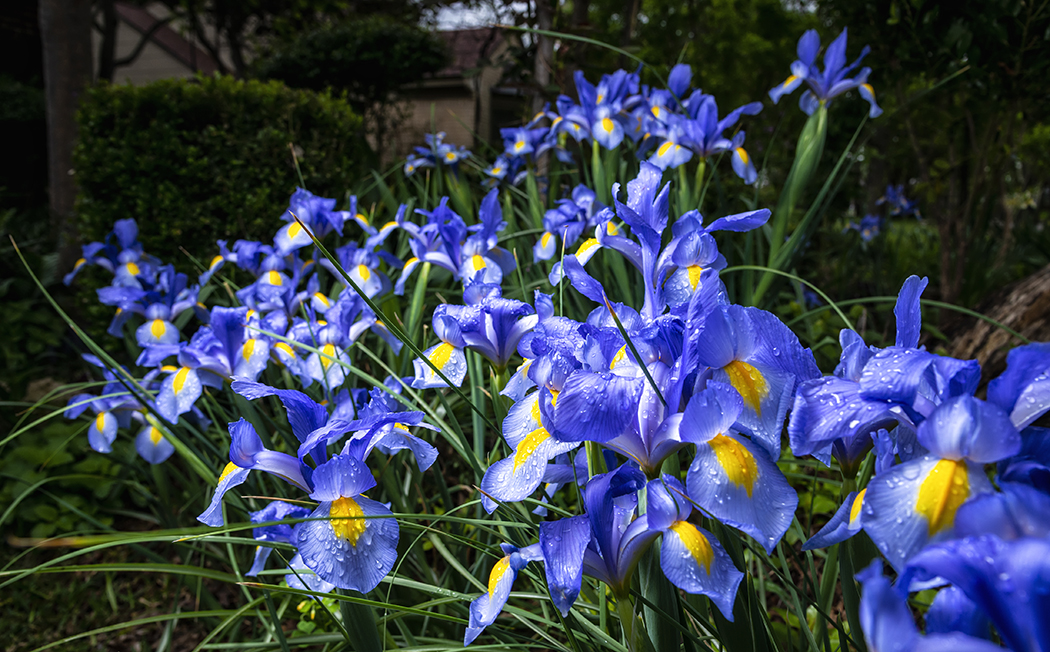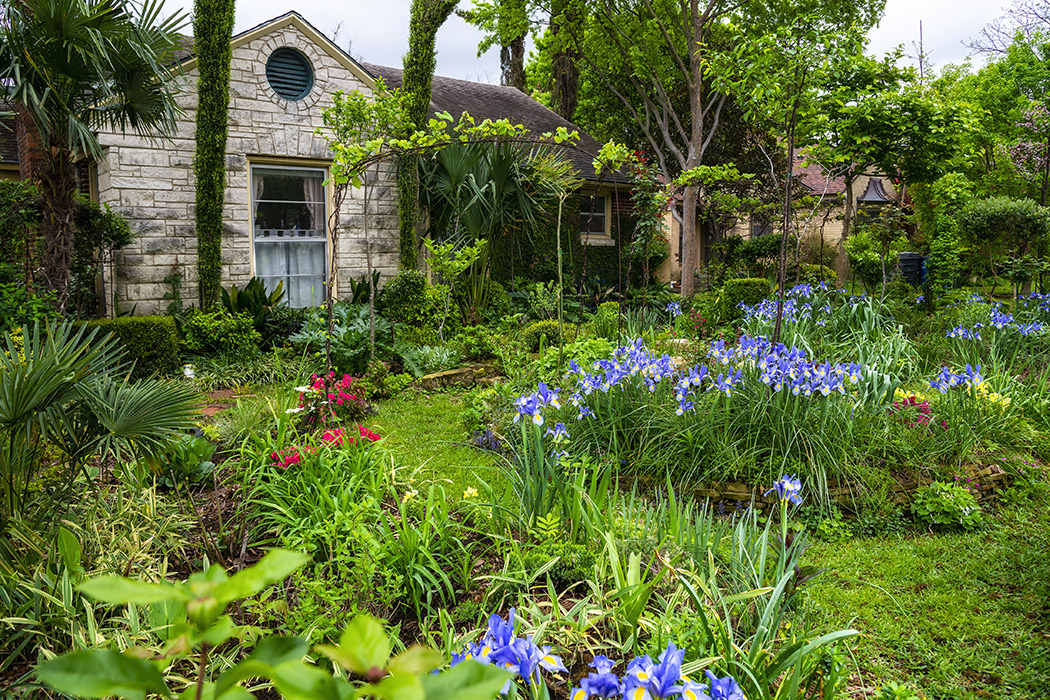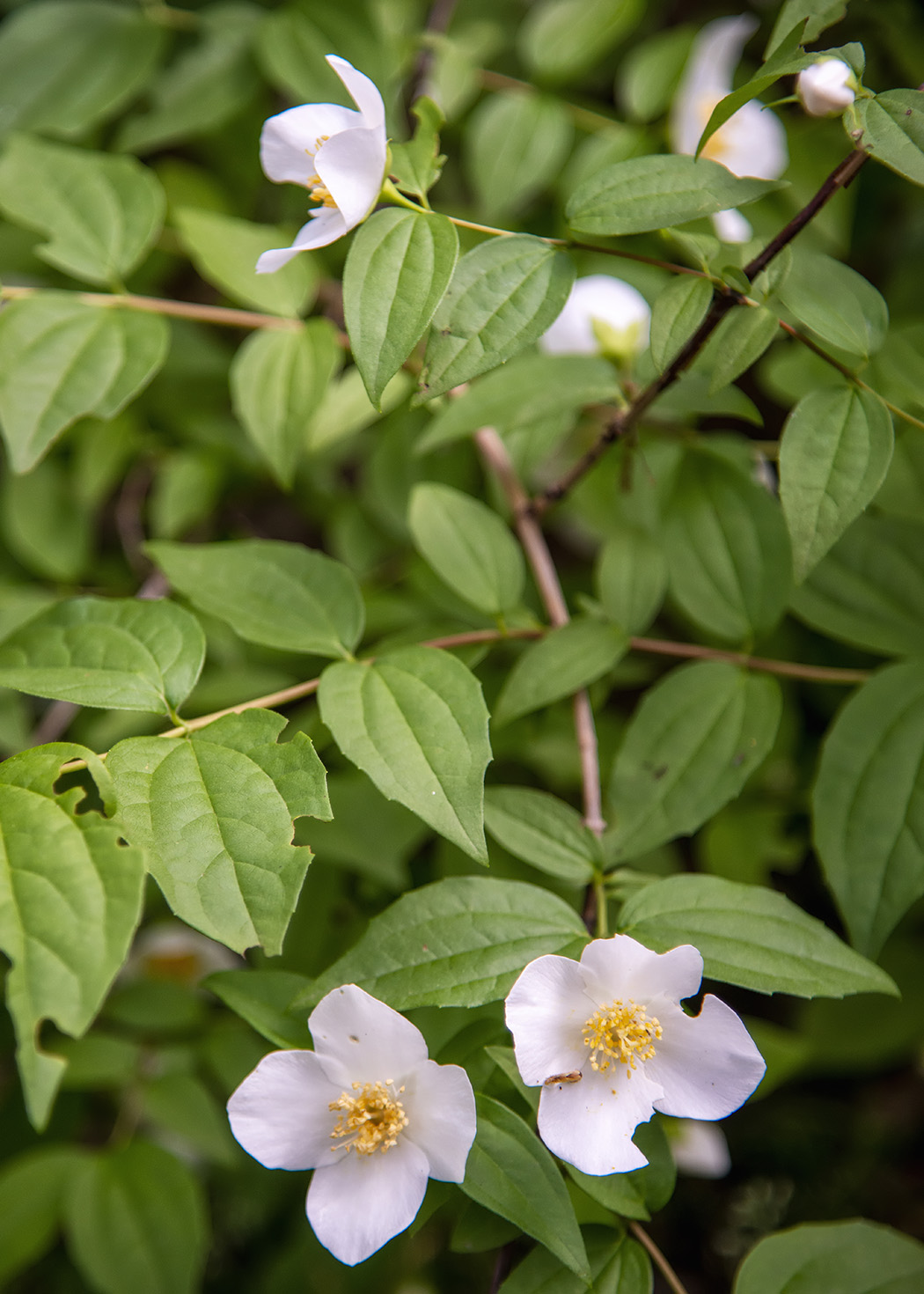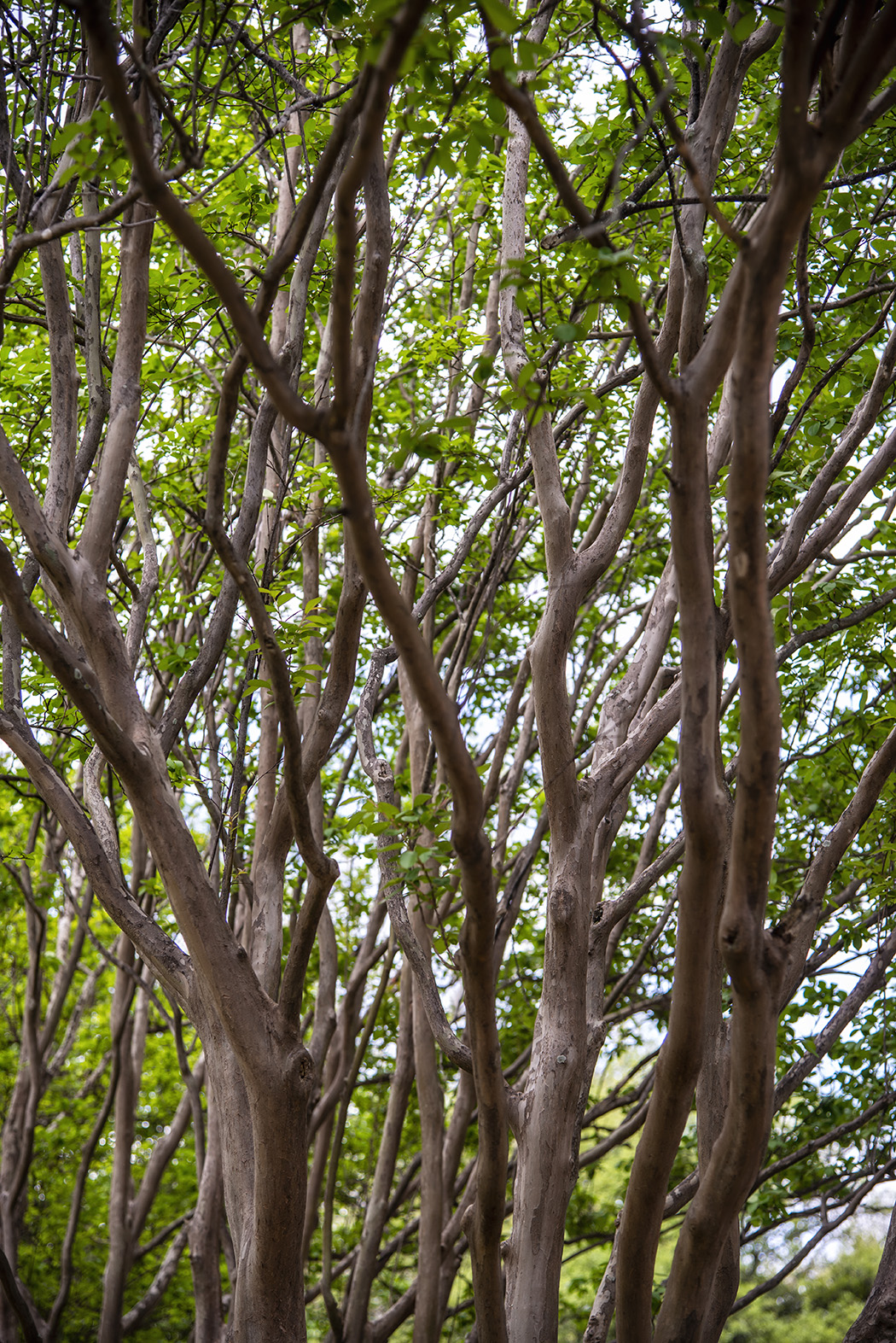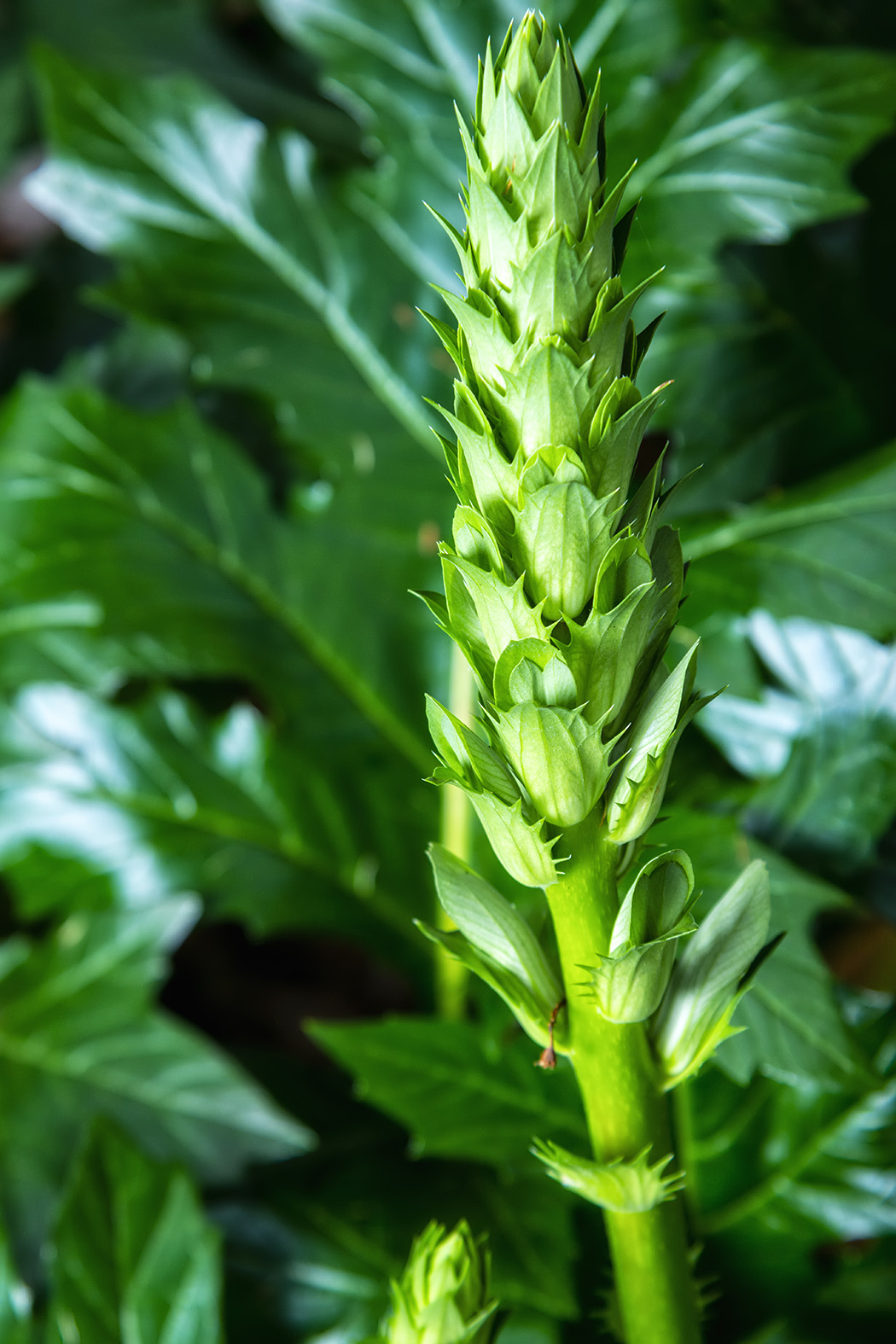Meet the people and plants that make our neighborhood beautiful
“When you garden, you learn about botany, but also meteorology, insects, birds, geology and soil health,” he says. “There are so
many fields of science involved in gardening.”
Johnson is one of Oak Cliff’s super gardeners. His front yard is full of flowers, butterfly attractors and native plants of all colors, heights and textures. There are grapevine trellis arches and mowed pathways lined with several varieties of fragrant mint.
He’s the administrator of the Oak Cliff Gardeners Facebook page, a vibrant online community with more than 2,500 members. Johnson and the group adopted an Oak Cliff hospice center, Legacy Founders Cottage, and renovated a patio with plants and supplies donated by the group. They also planted a mini garden in front of the Texas Theatre.
Johnson is at the center of an in-real-life gardening community as well. “When there’s nothing to do here, then I go to my neighbors’ houses,” he says.
A couple of years ago, he began planting gardens in the easement behind his house in Stevens Park. It’s basically a grassy alleyway, and Johnson saw it as wasted space that he could use.
Now the alley garden spans the length of five houses, and there’s a 60-foot long compost pile.
He likes using sawdust, procured from a friend who works at a door factory, to make garden paths, and one path in the alley is so thick with sawdust that it feels like walking on a mattress.
His next-door neighbors grow butterflies by picking caterpillars off of plants such as fennel, parsley and dill, which the bugs like to eat, and putting them into an enclosure and fed until they make cocoons and transform.
Down the street is Pamela Mount, an Oak Cliff native and retired film industry location scout who bought her house about 15 years ago.
Her shaded backyard was scarcely more than a mud pit back then, she says. After several truckloads of soil, sand, gravel and stones, she made a grass-free garden inspired by Japanese Zen gardens.
“I had to learn to live with a shade scape,” she says. Gardens that get little sun are good for ferns and plants in hues of purple, Johnson says.
“In a shade garden, you sacrifice color, so you have to garden for texture,” he says.
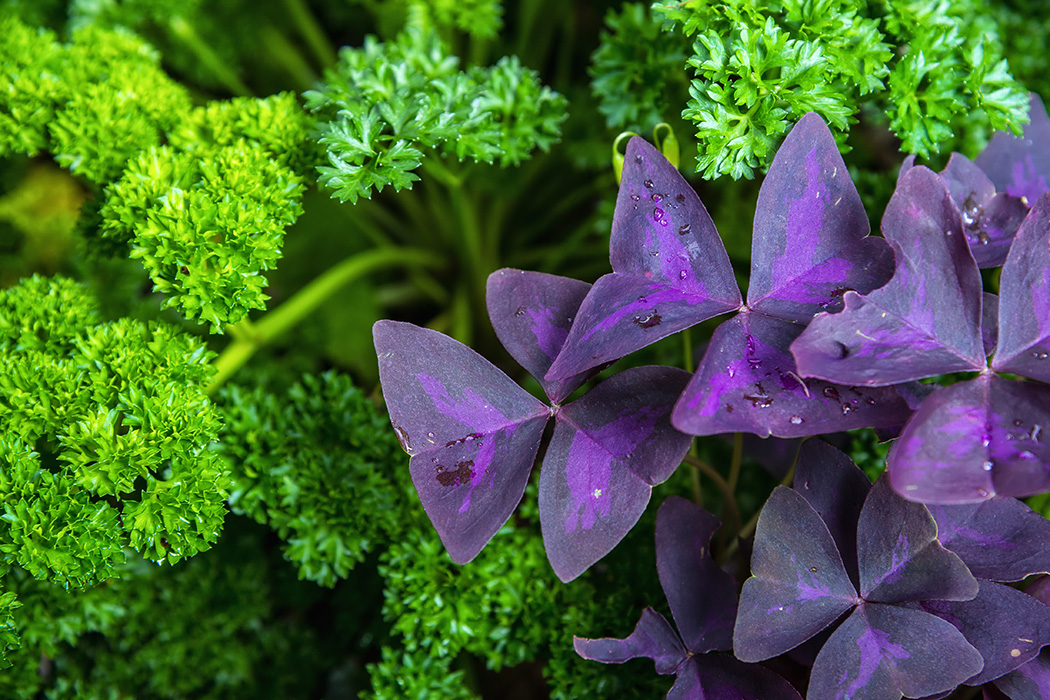
In the front yard, Mount’s strategy was to create a focal point with her garden. So she formed a slight knoll in front of the entry. The rest of the landscape design flows from there, and she’s always adding elements and tinkering with it.
“It’s like it’s never good enough,” she says. “You always want to add more.”
At the end of their block is Sheila Newton’s house. Newton is another Oak Cliff native who went to Kimball High School but then got married and lived for many years in California before moving back to Oak Cliff about five years ago.
A fantastic xeriscaped front yard came with her house.
“I was sold on this house the minute we pulled up,” she says. “A garden like this is something I’ve always wanted.” She loves it, but at 73, she is new to gardening. Luckily, Johnson is there to keep it in shape.
He convinced her to plant an agave plant, which she’d found in an old bucket on the property, right in front of her picture window. The plant has flourished and given off pups, and she likes it so much that she gave it a name, “Big Blue,” and even a nickname, “Van Damme” because it’s such a strong guy.
Johnson also convinced her to plant a nectarine tree. “That little tree gives off so much fruit, it’s amazing,” she says. Johnson is mostly retired from the finance industry, but he still does some work from home. The rest of the time, he’s in the garden, or he’s spreading the gospel of growing.
“The most important thing a gardener can grow is another gardener,” he says. “Because now you’ve multiplied your effectiveness. There are more people planting trees, more people saving butterflies.”
HERE ARE FOUR GARDENING BOOKS THAT VAN JOHNSON RECOMMENDS:
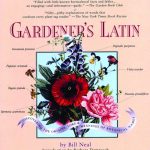
GARDENER’S LATIN: A LEXICON, by Bill Neal. Understanding the Latin words used in horticulture is helpful because the name of the plant can help you understand how it behaves.
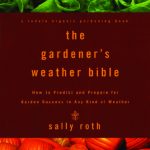
THE GARDENERS WEATHER BIBLE, by Sally Roth contains all kinds of things about weather. For example, a mackerel sky portends a major weather change in the next few days. It also has tips for “planting by the birds,” for example, what to plant when you start seeing robins. “Planting by the weeds” explains what to plant when dandelions bloom.
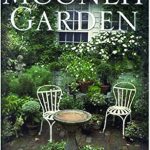
THE MOONLIT GARDEN, by Scott Ogden, explains how to grow an all-white garden that can be enjoyed at night, when temperatures are cooler. And it will smell great since many night- blooming plants are highly fragrant so that bees and bats can find them.

THE DALLAS PLANTING MANUAL, which is produced by the Dallas Women’s Club. It’s been printed since the 1950s, and it’s now in its 14th printing. “It’s worth it
for the calendar pages alone. It has a two-page spread of what to plant, prune harvest and fertilize month-by-month through the whole year. It’s got a lot of other good stuff too.”
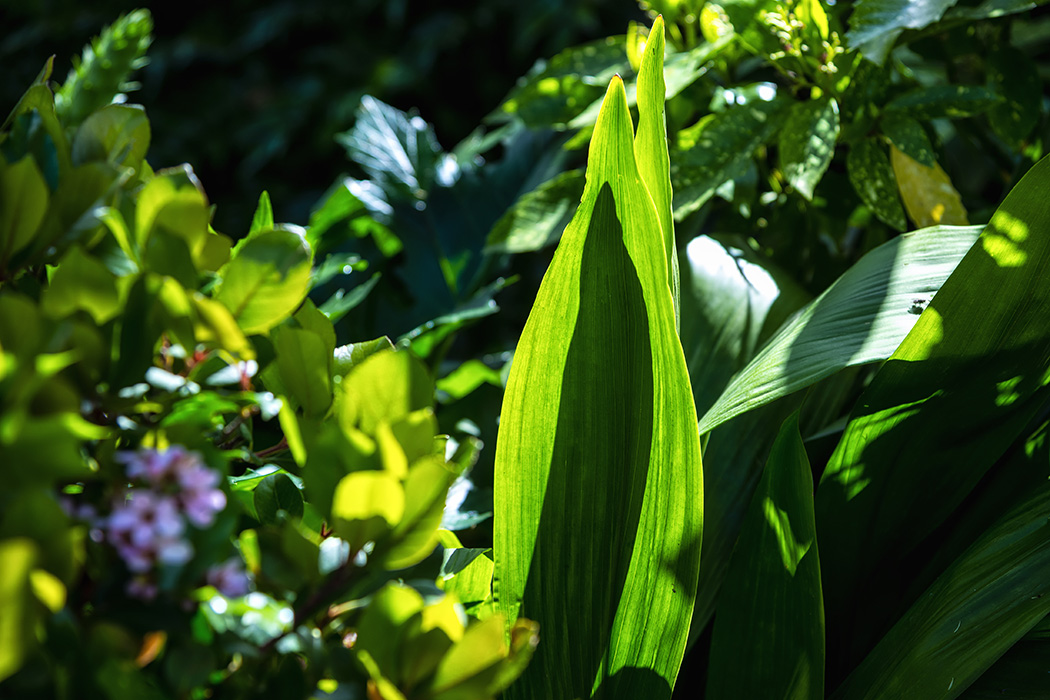
Veggie Project with his mother, Bettie, and their church, St. Luke Presbyterian, in 2014. The nonprofit organizes several community gardens in Dallas food deserts. And they run The Veggie Store, a monthly produce giveaway in South Oak Cliff.
He encourages more experienced gardeners to consider setting up community gardens in their neighborhoods.
“It doesn’t take a whole lot of people to set up a successful community garden,” he says. “And it can be done with social distancing. It’s outdoors, and everybody doesn’t have to be on top of each other to go out get some soil, get some seedlings and put them into the ground.
HERE ARE MONTGOMERY’S TIPS FOR NEW VEGGIE GARDENERS:
Look for a local source of clean organic soil rather than finding something that’s bagged. Find a local source for seedlings. Keep all of your vending as local as possible. That way you’re working with resources that are proven in our climate, and you’re supporting local businesses and growers.
Visit locally owned garden store and farmers markets to find local seedlings. Or ask gardener friends to share seeds from their successful crops.
If you don’t have a raised bed, don’t plant anything without having the soil tested first. There is a chance the ground could be contaminated.
It’s not too late to plant tomatoes, peppers, eggplants, melons, okra and beans if you start them from seedlings.
Have a garden delivered. Several local businesses offer to deliver everything you need to start a veggie garden. One of them is Restorative Farms, a nonprofit focused on urban agriculture and food deserts that runs two seedling farms in Dallas. Their Victory GroBox costs $110 and comes with two wooden boxes that serve as raised beds, soil, and seedlings. Find more information at restorativefarms.com.
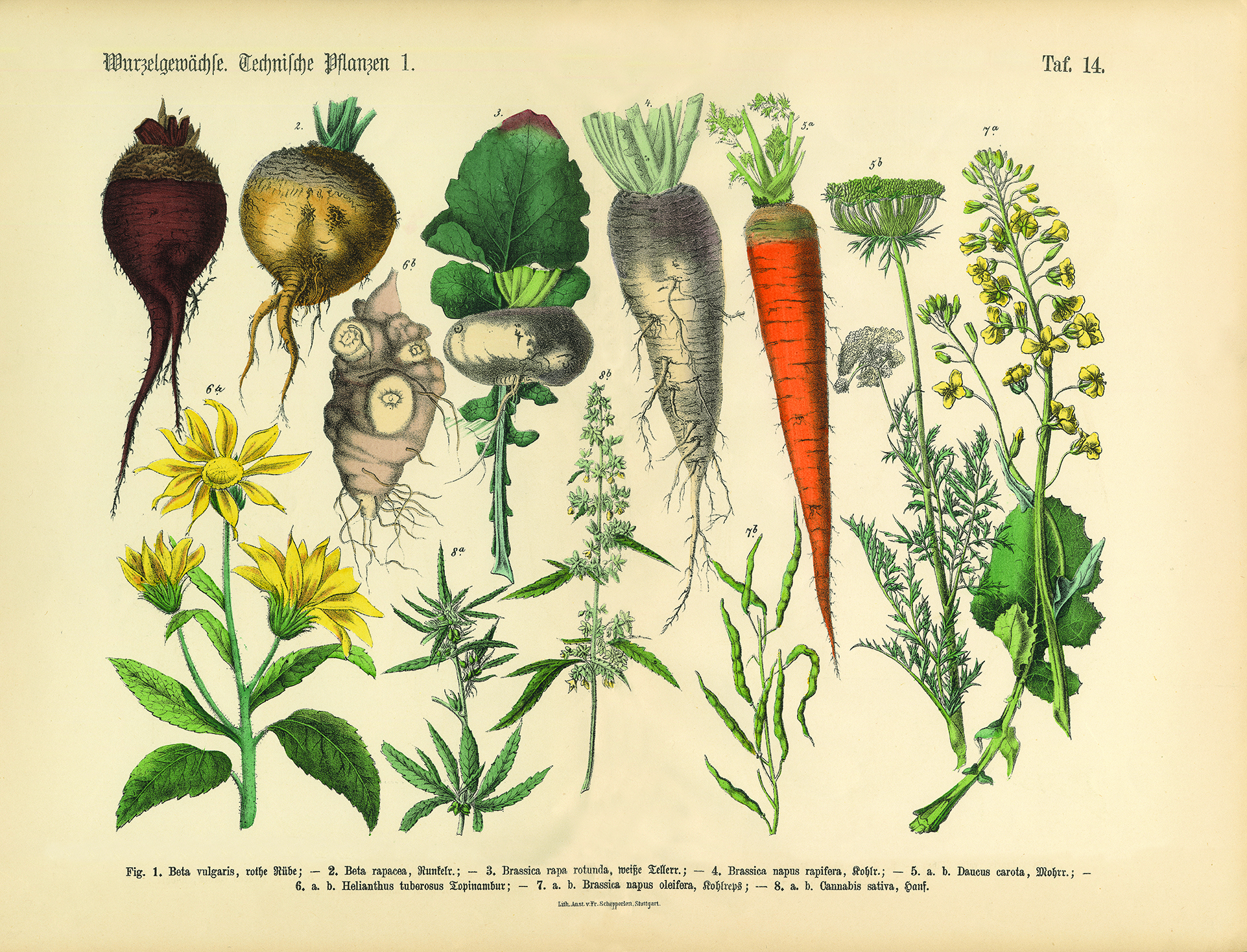
Very Rare, Beautifully Illustrated Antique Engraved Victorian Botanical Illustration of Root Crops and Vegetables: Plate 14, from The Book of Practical Botany in Word and Image
Oak Cliff artist and farmer Cynthia Mulcahy describes a product of the seed bank:
“In 2018, I picked up a packet of mustard green seeds at the free seed library at the Dallas Public Library’s central branch. The seeds from a local gardener were labeled as ‘heirloom mustard greens passed down through four generations in East Oak Cliff.’ I’ve never seen anything I’ve planted grow like this other than native wildflowers and sunflowers. It’s like a super plant that’s been cultivated locally for decades, and the amount of fresh spicy organic mustard greens they’ve put off is unbelievable. We’ve harvested over 25 pounds of greens for salads and for a collard and mustard green version of spanakopita.”
Find more information at dallaslibrary.org/government/seedlib.php.
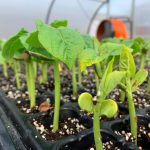 LET THERE BE VEGGIES
LET THERE BE VEGGIES
The grocery panic around coronavirus, coupled with stay-at-home restlessness combined to create a lot of new backyard farmers. To help make our neighbors’ gardens successful, we asked two master gardeners for tips on growing veggies. Diane Sloan is CEO and principal partner of Kevin Sloan Studio, a landscape architecture firm in Oak Cliff.
HERE ARE DIANE SLOAN’S TIPS FOR NEW GARDENERS:
Start with a raised bed. That way, you don’t have to do all of your own soil amending, which involves a lot of digging and compost. Build or buy raised beds ready to assemble.
Buy the best quality of landscaper’s mix that you can. If you have some good soil already, mix it with compost if you have that.
Start small. Don’t make something huge. Don’t make it any larger than 4 feet wide because you want to be able to stand outside of it and reach inside.
Square-foot gardening is ideal for limited space. That’s dividing a plot by square feet, sometimes separated by string. It’s a way to organize crops and maximize space. An engineer, Mel Bartholomew, wrote the book on square-foot gardening in the 1980s, and melbartholomew.com contains everything you need to know to get started.
Only plant things that grow well in our region. We don’t have to figure that out because Texas A&M University Agrilife Extension already did that for us. Everything you want to know about crops that grow in Texas, when to plant and harvest and how to tend a garden can be found at aggie-horticulture.tamu.edu. The Texas growing season is year-round, so there’s always something to plant.
Another resource is the free Dallas County Master Gardeners help desk. Call, 214.904.3053, or email dallasmg@ag.tamu.edu, and a master gardener will answer your questions. If they don’t know the answer, they will research it and call you back.

